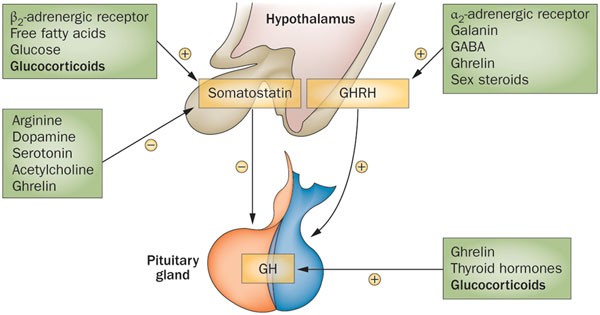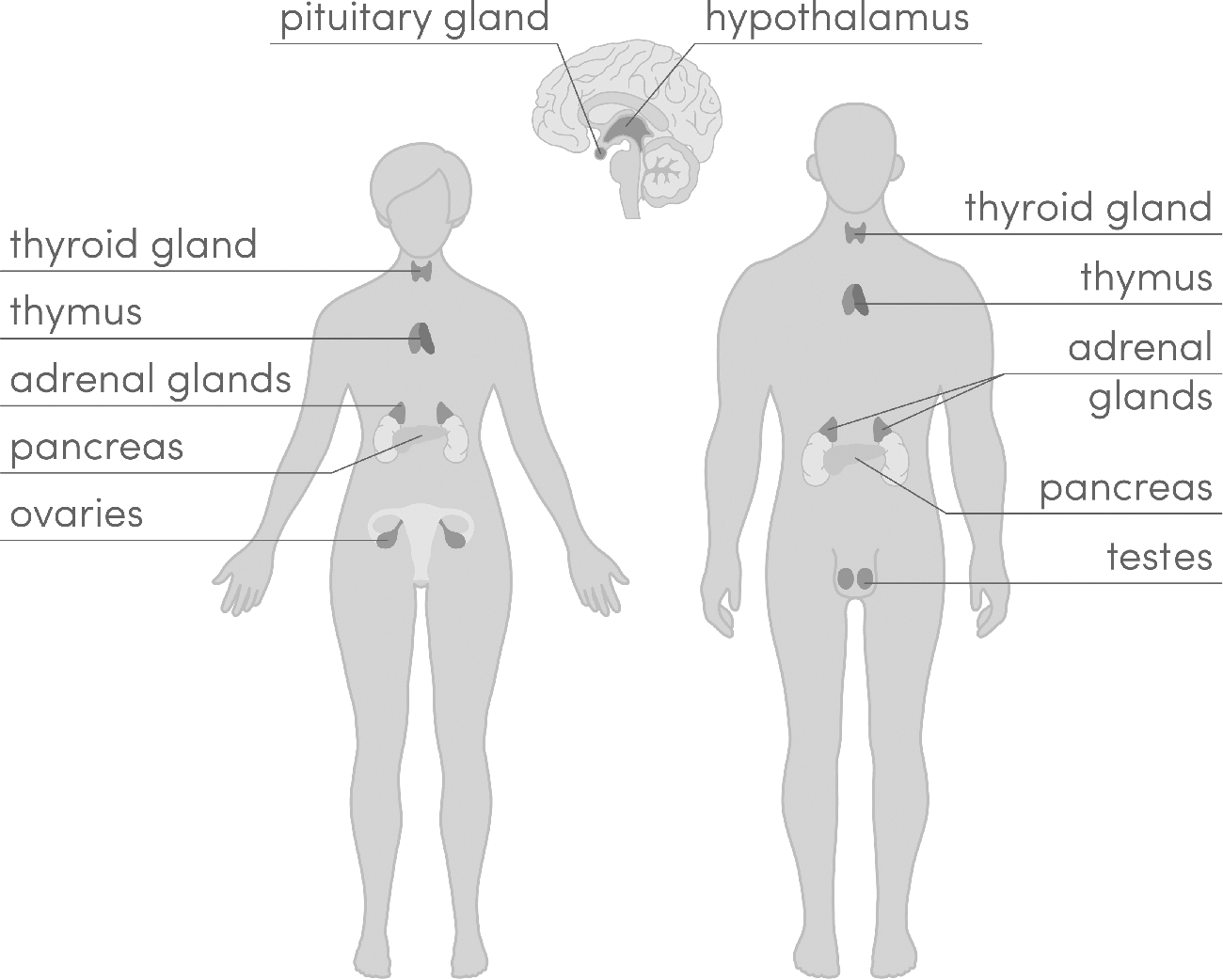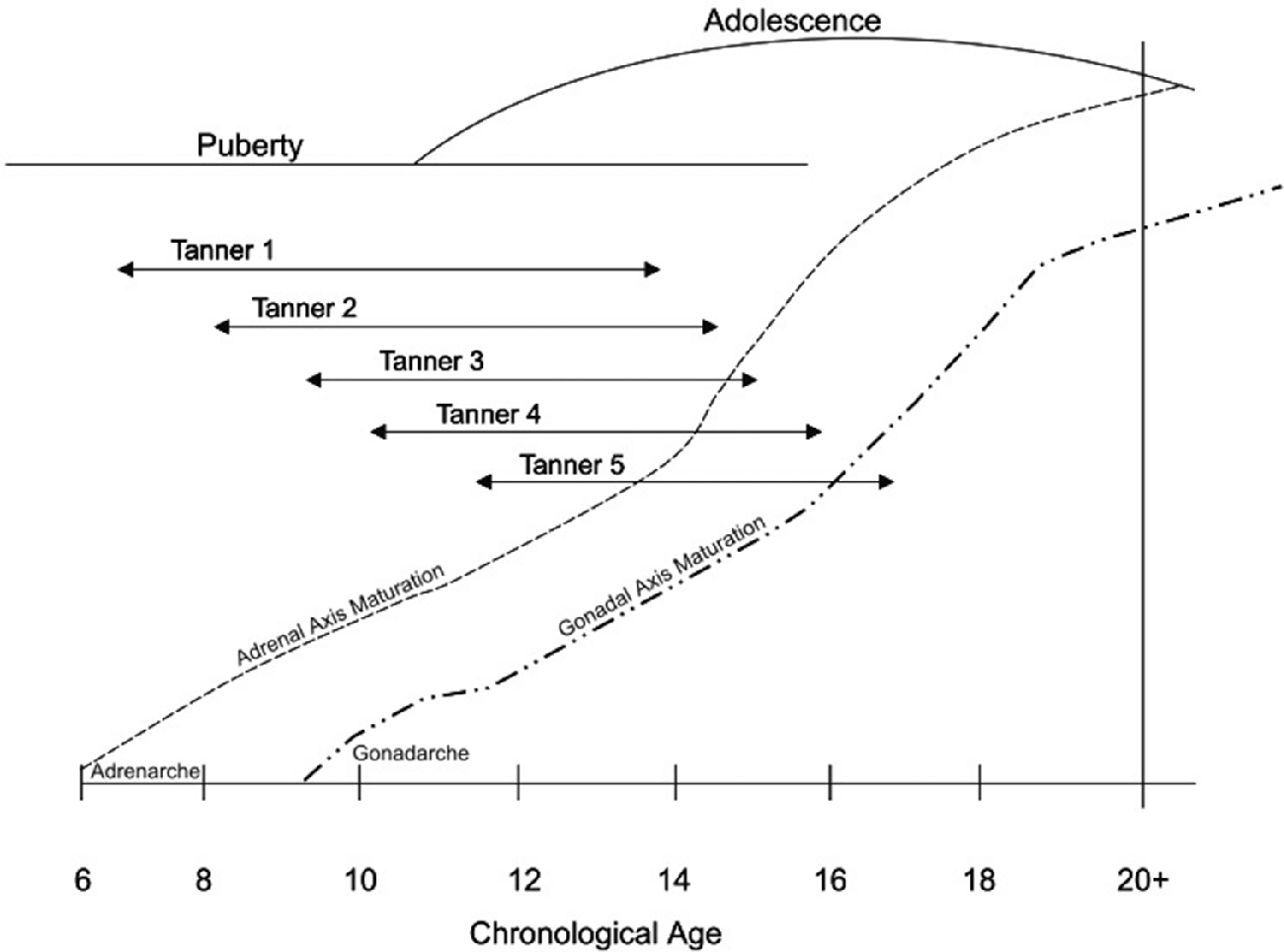Pubertal Hormones
Role of Hormones in Initiating Reproductive Functions
 File photo | Credit: FatherlyOpens in new window
File photo | Credit: FatherlyOpens in new window
Hormones are the chemical messengers which co-ordinate the activities of living organisms and also their growth. The hormones play an important role in initiating the reproductive functions of adolescents. This is because the changes which occur at adolescence are controlled by hormones. In other words, the onset of pubertyOpens in new window is controlled by hormones. |
Puberty is initiated by hormonal signals from the brain to the gonads: the ovaries in a girl, the testes in a boy.
In response to these signals, the gonads produce hormones that stimulate growth, function and transformation of the brain, bones, muscle, blood, skin, hair, breasts and sex organs. Physical growth, of height and weight, accelerates in the first half of puberty and is completed when the child has developed an adult body.
Hormones are secreted by the endocrine system into the bloodstream to stimulate specific cells into action.
Hormones are made and secreted by specialized tissues in the body called endocrine glands. The hormones are poured directly into the blood and carried throughout the body by the blood circulatory system.
A hormone is produced by an endocrine gland in one part of the human body but causes a particular effect in another part of the body.
Although there are many different types of hormones, in this literature we will focus on those related to sexual reproduction: androgens, the primary type of male sex hormones, and estrogens, the primary type of female sex hormones.
Testosterone, which is secreted from testes in males, is an androgen that plays a central role in male pubertal development.
As boys start to undergo puberty, they release increasing levels of testosterone, a process that promotes the physical changes observed in boys during this time, including the development of external genitals, an increase in height, and voice changes.
Estradiol, which is secreted from ovaries in females, is the equivalent hormone in girls that is responsible for much of female pubertal development, including breast development, pubic hair growth, and the onset of the first menstrual period.
Although these hormones are more prevalent in one sex or the other (i.e., males tend to have higher levels of testosterone than females), both males and females produce both types of these hormones. In fact, there is considerable variability in the level of these hormones in each person. While there are men who have high levels of testosterone, there are also men with relatively lower levels of testosterone; women also vary in their level of testosterone.
Neuroendocrine System
Pubertal hormones are released in the brain. It is through activation of the hypothalamic-pituitary-gonadal (HPG) axis that the brain starts to communicate to the gonads (sex glands) that it is time to begin the process of puberty. There is one brain region in particular, the hypothalamus, which plays a central role in this process.
The hypothalamusOpens in new window is more generally responsible for monitoring basic human needs, such as eating, drinking, and sex. At the onset of puberty, it plays a special role of governing the pituitary gland, through gonadotropin-releasing hormone (GnRH) neurons.
The close proximity of these regions to one another, as you can see in Figure X-1, makes it easy for them to communicate. It is the pituitary gland that produces the hormones, called gonadotropins, necessary to stimulate the release of sex hormones from gonads.
The level of sex hormones that need to be released from the gonads is regulated by two hormones secreted from the pituitary gland: follicle-stimulating hormone (FSH) and luteinizing hormone (LH). FSH stimulates sperm production in males and follicle development in females. LH regulates testosterone production in males and estrogen secretion and ovum development in females.
 Figure X-1 The hypothalamus regulates hormone release from the pituitary gland.
Figure X-1 The hypothalamus regulates hormone release from the pituitary gland. |
The amount of FSH and LH released is important because too much or too little can have significant effects on the development of primary sex characteristics (e.g. development of sex organs) and/or on the appearance of secondary sex characteristics (e.g. facial hair and breast development). How does the system know how much of these hormones to releases?
Think of the system like a thermostat. If a room becomes too cold, the thermostat signals the furnace to turn on. Eventually, the room becomes warm and this eventually triggers the thermostat to turn off the furnace.
Over time, the room temperature may begin to fall again until the thermostat once again signals the furnace to turn on. This repetitive cycle is called a negative feedback loop because an increase in temperature turns the furnace off while a decrease in temperature turns the furnace on.
The endocrine system works in a similar “need-based” way: it receives instructions from GnRH neurons to increase FSH and LH release when the level of these hormones drops below a particular set point – secretion stops when the level of the set point is reached to prevent too much of the hormone from acting on the gonads.
This flexibility allows hormone levels to be tailored for each specific person, as all individuals are different in how much of a particular hormone they need. Each person’s need is based on their genetic makeup and is influenced by environmental factors or other internal bodily conditions.
You may be thinking that all of these vocabulary words and sequential processes are hard to remember. This process is indeed complex! But rather than focusing on the vocabulary words, take a moment to appreciate how well regulated and mapped out the neuroendocrine system is.
Puberty is not random: it follows a prescribed sequence of events, involving the same neural regions and hormones in every individual. It is also always initiated in early adolescence, not in toddlerhood or in the late teenage years. This means that over evolutionary time all species have determined the optimal developmental time for members of that species to appreciate sexual maturation.
 Figure X-2 The endocrine system includes the hypothalamus and the pituitary gland in the brain, which release hormones that circulate through other glands and organs in the body, including the thyroid gland, thymus, adrenal gland, pancreas, ovaries (in females) and testes (in males).
Figure X-2 The endocrine system includes the hypothalamus and the pituitary gland in the brain, which release hormones that circulate through other glands and organs in the body, including the thyroid gland, thymus, adrenal gland, pancreas, ovaries (in females) and testes (in males).
|
Adrenarche and Gonadarche
The initial physical manifestations of puberty are adrenarche (involving the adrenal glands) and gonardache (involving the ovaries and testes), which are initiated by hormonal signals from the hypothalamus.
These two distinct phases of puberty occur as a result of interactions between the pituitary gland and other glands throughout the body.
The pituitary gland interacts with the thyroid gland, located in the neck area, and the adrenal glands, which sit on top of the kidneys, to stimulate additional pubertal changes. Together, they comprise the endocrine system, which is shown in Figure X-2.
 Figure X-3 The different stages of puberty (Tanner 1 through Tanner 5) occur across a broad age span and interact with the major milestones, including adrenarche and gonarche, at various ages in different individuals (Dorn et al., 2006).
Figure X-3 The different stages of puberty (Tanner 1 through Tanner 5) occur across a broad age span and interact with the major milestones, including adrenarche and gonarche, at various ages in different individuals (Dorn et al., 2006). |
Adrenarche is an early sexual maturation stage of puberty that typically begins early, around 6 to 8 years of age. Figure X-3 (from Dorn et al., 2006) is a good depiction of the timeline during which each of these stages occurs.
During adrenarche, the adrenal glands secrete adrenal androgens, such as dehydroepiandrosterone (DHEA) and dehydroepiandrosterone sulfate (DHEAS). Secretion of these hormones leads to androgen effects, including the emergence of pubic hair and body odor because of changes in sweat composition. It also appears to play a role in changes in the oiliness of the skin that leads to acne.
Gonadarche begins later than adrenarche, typically around 8 to 10 years of age (Figure X-3), but there is considerable variability among individuals as to when it begins. It is the period most commonly thought of as puberty because it involves the maturation of observable sexual characteristics.
Gonadarche includes menarcheOpens in new window, the first menstrual period, which occurs in mid to late gonardache in girls, and spermacheOpens in new window, a boy’s first ejaculation of semen, that occurs in early to mid gonadarche.
See also:
- Blakemore, S.J., Burnett, S., and Dahl, R.E. (2010). The role of puberty in the developing adolescent brain. Human Brain Mapping, 31, 926 – 933.
- Sisk, C.L., and Foster, D.L. (2004). The neural basis of puberty and adolescence. Nature Neuroscience, 7,1040 – 1047.

